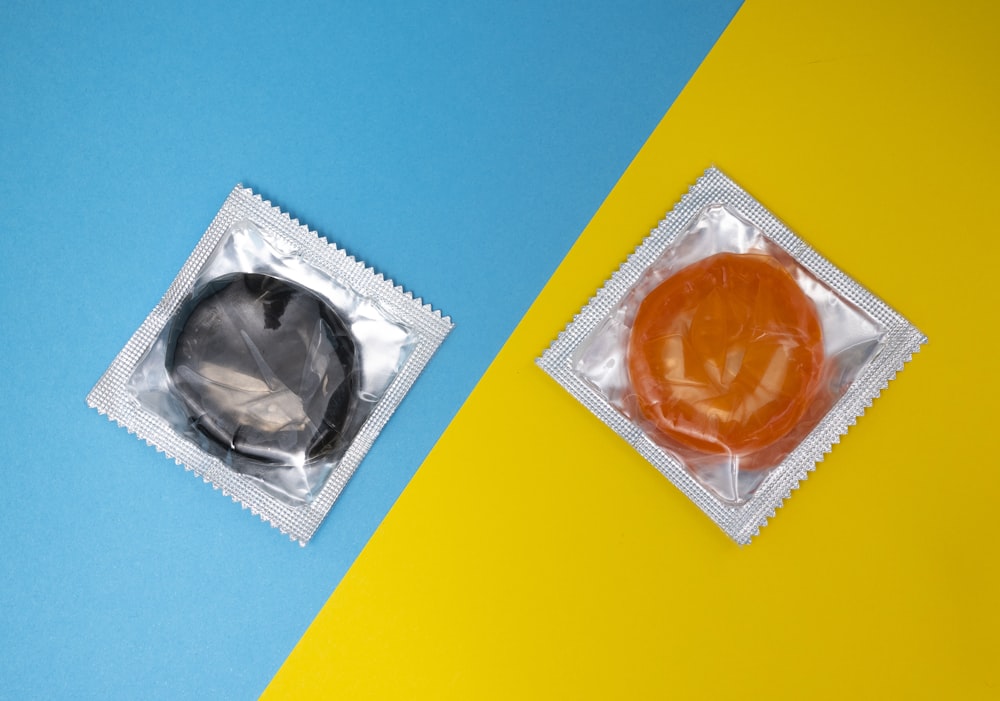
Many women think of the birth control pill as a necessary evil. They take it because they feel they have to, but the negative birth control side effects have them reconsidering the pill as their method of contraceptive. There are many different methods of birth control available, and it takes time to find the one that suits you. The pill seems to be the most popular.
A United Nations study conducted in 2019 revealed that among 1.9 billion women in their reproductive years (ages 15 to 49), about 1.1 billion are current users of contraceptives. This is in line with recent movements to revolutionize the stigma surrounding reproductive health care. More and more women have been encouraged to engage in safe sex practices to ensure their well-being. With this comes the introduction of contraceptives, one of the most common being the birth control pill.
How Does the Birth Control Pill Work?
Birth control pills are a kind of oral medication that releases hormones to prevent an unwanted pregnancy for sexually active women. However, it must be emphasized that the pill does not protect against contracting a sexually transmitted disease (STD). These pills work by preventing the sperm from fertilizing the egg. It stifles the ovulation process, so while on the pill, the ovaries would not be able to produce an egg. Thus, there will be nothing for the sperm to fertilize, preventing the formation of an embryo that will eventually develop into the fetus.
Moreover, the pill thickens the cervical mucus, making it very difficult for the sperm to travel and thrive. A lot of women use the pill because it does not impact future fertility. Meaning, if you decide to stop taking the pill, you can get pregnant. Most of all, in terms of efficacy, birth control pills are 99% effective in preventing unwanted pregnancies, so long as they are taken correctly.
For example, skipping one day would throw off your body’s hormone regulation. Moreover, it is important to note that the effectiveness of the pill will depend on when you start. Starting the pill within a 5-day window after getting your period would make the pill effective immediately. However, if you do not start within this time, it may take 7 full days for you to be protected from pregnancy. Additionally, taking birth control alongside other medications, like Rifampin, Griseofulvin, antibiotics, certain HIV medication, and certain anti-seizure medication can lessen the efficacy of the pill.
Are There Any Positive Birth Control Pill Side Effects?
Most women are well aware of the many negative birth control pill side effects. However, there are still some positive birth control pill side effects:

1. Regular and predictable periods
While the pill is usually identified as a measure to avoid pregnancy, many women use the pill to regulate their hormonal imbalances. Birth control pills contain progestin and estrogen which helps control the menstrual cycle. It is common for gynecologists to prescribe pills so that their patients can expect more regular periods.
2. Address reproductive health issues
Apart from irregular cycles, women with reproductive health issues benefit from taking birth control pills. For instance, women with PMDD (Premenstrual Dysphoric Disorder (characterized as severe PMS or premenstrual symptoms, PCOS (Polycystic Ovary Syndrome, where the ovaries produce excess androgen), and Endometriosis are likely to be advised to take birth control pills to regulate hormones, develop a regular cycle, and reduce the severity of symptoms.
3. Potentially get rid of acne
As mentioned earlier, birth control pills contain progesterone and estrogen. These hormones are known to be acne fighters. Taking the pill can help alleviate hormonal acne and reduce the occurrence of the dreadful occasional zit.
4. Alleviate perimenopause and menopause symptoms such as period cramps
Some doctors prescribe birth control pills for women in perimenopuase and menopause. These pills can ease irregular periods. On top of that, they can alleviate hot flashes, night sweat, and excessive vaginal dryness.
Negative Birth Control Pill Side Effects: The Cons of the Pill
There are many drawbacks to taking the birth control pill, and many potential negative birth control pill side effects. Perhaps not all of these will happen to you, but it’s likely some of the following will occur if you take the pill:
1. Nausea
For some women, birth control pills could cause nausea. However, this is often felt within the first few weeks or months of being on the pill. Most specialists say that nausea should eventually subside as your body adjusts to the hormones. But, if nausea is persistent, call your doctor.
2. Weight fluctuations
Some women may experience weight gain from water retention or increased fat or muscle mass when on the pill. Other women may also experience weight loss. A woman’s reaction to the pill tends to vary based on their body. Weight gain is a more common side effect than weight loss.
3. Mood swings
When it comes to birth control pill side effects, the effect of the pill on one’s mood is commonly lamented. Hormones play a huge part in your emotions. As the pill carries hormones, a change in hormone levels may result in mood swings. Recent research suggests that the use of hormonal contraception has a causal link to depression in women, so it is advisable to speak with your doctor if you have a family history of depression or any other mental health concerns.
4. Decreased libido
Since the pill is a form of hormonal contraception, it may alter levels of libido. One side effect is that it could lessen your sex drive. However, some individuals share a polar experience saying that they have an increased sexual drive fueled by the complacency that goes with knowing that no pregnancy is bound to happen.

5. Headaches and migraines
The hormones carried by the pill may cause headaches and migraines. If you suffer from these issues, taking the pill could increase the frequency of their occurrence. Any change to female sex hormones like estrogen and progesterone could potentially trigger migraine headaches.
Note that this may depend on the type of pill and the dosage. If you notice this symptom, consult your physician and request a lower dosage or change to a different pill variant. For individuals with PMS, taking the pill is linked to a reduction in PMS symptoms which may consist of cramps, headaches, and nausea.
6. Spotting
Another common side effect of the pill is spotting or bleeding in between your menstrual periods. However this is more common with progestin-only pills.
7. Breast tenderness
Studies say that taking birth control pills could increase breast size by a little bit. Since these pills contain hormones that change the level of progesterone and estrogen in a woman’s body, this could result in changes in the breast tissue. Hence, if you’re taking the pill, you could feel that your breasts are more sore and tender.
In general, many women take birth control pills without any issues since they are specially formulated and safe to use. They should not make you feel sick or uncomfortable. Side effects don’t happen to everyone who takes the pill. And if anyone feels a few symptoms, they should go away after a month or two when the body adjusts. If you’re having a hard time coping with a particular brand, it’s advisable to speak with your gynaecologist.
Other Risks of Taking the Pill
Birth control pills are tagged as safe for most women to use. However, some individuals are more at risk than others. Studies conducted by the Office on Women’s Health suggest that taking these pills may result in blood clots and hypertension, thereby resulting in heart attacks or stroke. These clots may also cause embolisms.
Moreover, the prolonged usage of birth control pills may increase one/s risk of developing other health issues, like cardiovascular issues, breast cancer, ovarian cancer, endometrial cancer, cervical cancer, and colorectal cancer.
Taking these things into consideration, it is important to consult your primary care physician, or a reproductive healthcare specialist to review your case before putting you on any form of hormonal medication. This is especially important for:
- individuals with a history of hypertension
- smokers over age 35
- have a family history of heart disease
- have migraine with aura (the lightheaded feeling that precedes and prognosticates a migraine)
- individuals experiencing abdominal pain
- those experiencing breathing problems
- women with vision problems
- individuals with diagnosed health issues (cancer, etc.)
Alternative Forms of Birth Control
If you do not want to take birth control pills or are advised by your doctors not to do so, you may use these alternatives.
Non-hormonal:

1. Condoms
Condoms act as a barrier to prevent the sperm from being ejaculated into the cervix. Moreover, it protects from STDs, ensuring the protection of your reproductive system. Birth control pills do not protect from STDs, so you may still use condoms even whilst on the pill. Condoms are fairly effective in preventing unwanted pregnancy, with only 18 out of every 100 users getting pregnant.
2. Diaphragm
Diaphragms are also protective barriers. These are dome-like cups that are inserted into the vagina, preventing the sperm from reaching the cervix. Some diaphragms contain spermicide, which, as its name suggests, terminates the sperm. Only 12 out of every 100 users of diaphragms with spermicide become pregnant each year
3. Traditional Intrauterine Devices (IUD)
The traditional IUD is made out of copper, and it is inserted into your uterus by your gynaecologist. The copper IUD can last for 10 years. It protects against pregnancies but against STDs. The copper IUD releases ions into the uterus which alters the fluids of both the uterus and fallopian tubes. As a result, the area becomes inhospitable to sperm, making fertilization difficult.
Hormonal:
1. Birth Control Shot
Birth control injections are an alternative. These are administered every 3 months and only 6 out of every 100 users become pregnant with the use of these shots.
2. Patches
Transdermal patches are popular because they act like birth control pills without the danger of you forgetting to drink the pill. This is a sticker which gradually releases hormones into the skin. One patch can last for a week. You can replace the patch every week for 3 consecutive weeks. Then, have one week off without it. This patch is more than 99% effective when used correctly.
3. Implants
Recent technology has allowed for the development of implants. These are small plastic rods that are inserted into the upper arm. These release hormones that prevent pregnancy and can last up to 3 years. Only 1 out of every 100 users gets pregnant when using this device, making it 99% effective.
4. Hormonal IUD
These are inserted into the vagina just like a traditional IUD but they contain a combination of hormones. Different hormonal IUDs have varying efficacy lengths. For example, Kyleena works for up to 5 years while Mirena and Liletta could last for up to 7 years.
It’s important to note that nobody should ever force you to take birth control if you don’t like the birth control pill side effects, and you don’t want to take it. Men can wear a condom, even if they don’t want to. It’s not solely the woman’s responsibility to ensure sexual activity is safe.







Comments are closed.